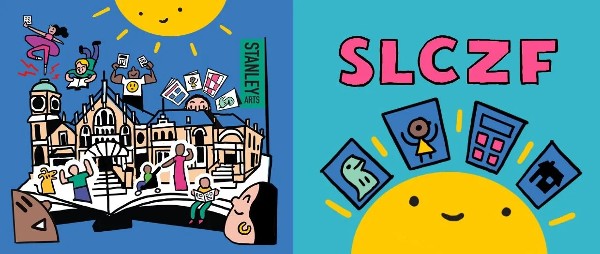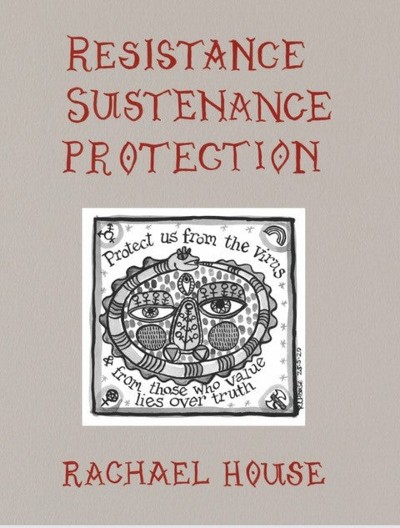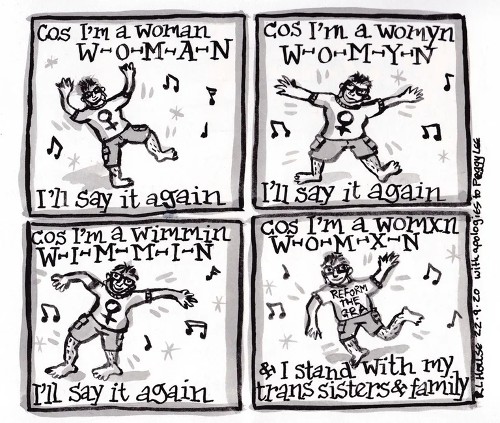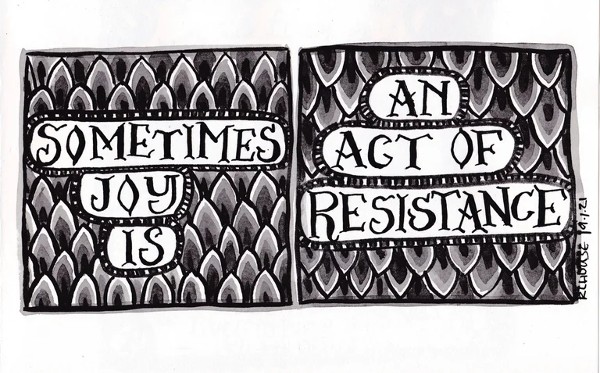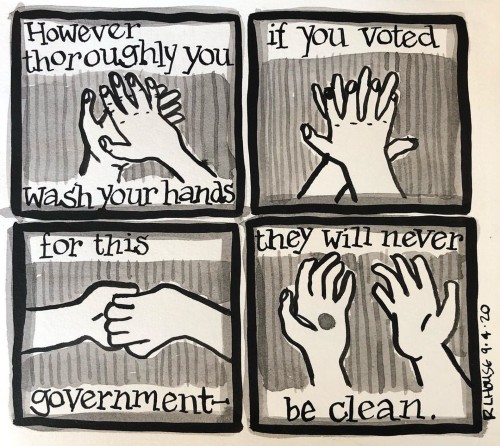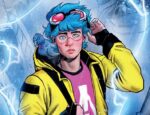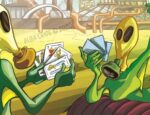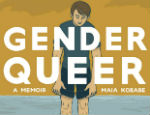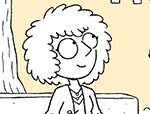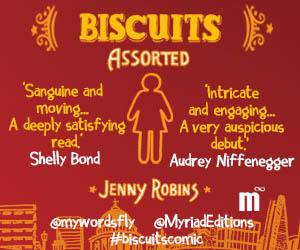SLCZF WEEK! Continuing our week of coverage of the South London Comic & Zine Fair today at BF we chat with exhibitor Rachael House whose Resistance Sustenance Protection – a collection of comic strips from the early months of the pandemic – was reviewed here recently at Broken Frontier. With a background in self-published comics and zines going back to the pre-Internet era House has seen the world of DIY culture evolve and adapt across the years. I chat with her today at BF about her varied creative output, chronicling life in lockdown, and the feminist and queer politics at the heart of her practice…
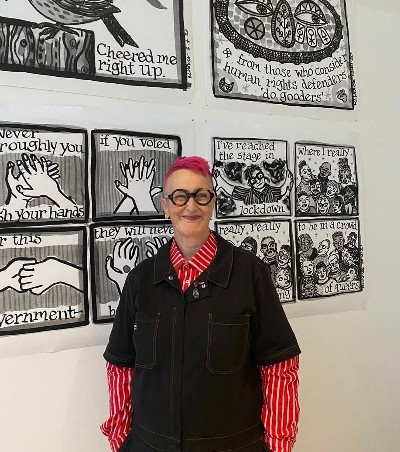
ANDY OLIVER: Comics are just one element of your practice so let’s begin by asking you about your wider artistic background and projects, and the recurring themes you explore across the mediums you work in?
RACHAEL HOUSE: Hello Andy! Thanks for asking me these questions. I usually say I’m an artist who makes events, objects, performances, drawings and zines, and I think they are all the same. I’m a fine artist, I studied as a mature student. I see everything I do as part of my fine art practice, including my comics. But my comics and zines are 100% comics, my zines are (low) priced as zines and are in no way ‘artist’s books’, and I am part of comics and zine communities, and have been for several decades.
My work focuses on feminist and queer politics and resistant histories/herstories/theirstories, aiming to reach as many like-minded people as possible. I use humour, personal engagement and events to draw in those who may not be like-minded too- I recruit. My projects have ranged from Rachael House’s Feminist Disco- putting the ‘disco’ into ‘discourse’, to an ongoing series of piñatas representing heteronormativity, patriarchy and the institution of monarchy, to be gleefully and violently smashed at joyful celebrations with big glittery sticks.
I’m also a co-director, with Jo David, of Space Station Sixty-Five, an art space in Kennington. I’m on a long term sabbatical to concentrate on making my own work, but dipping in for projects that I’m especially keen on.
AO: Broken Frontier readers may have been introduced to your art via our review of your acclaimed Resistance Sustenance Protection last year. How did the process of documenting those first pandemic months feel on a personal level? Were there elements of the cathartic to it in speaking out? Or did you ever feel overwhelmed by the sheer sense of despair at the time?
HOUSE: I was very fortunate to be supported by Metal during the time I was drawing and making my book. I had been going to start a residency with them, then lockdown happened, and this morphed into my pandemic comics instead. I felt compelled to make these drawings, and feel lucky that Metal gave me financial, emotional and artistic support to do so. I drew short strips most days and posted them on Instagram. In many ways it reminded me of my 90s queerzinester days, but instead of mail and trades and letters in the post, it was comments, and most movingly, direct messages in which people shared very private things with me. There was a proper meaningful exchange going on.
I was in a privileged position where what I was making mattered intensely to people, particularly those who were isolated. So yes, I think it was cathartic. And a necessity for me. To try and make sense of what was going on and concisely document the everyday and political. I certainly felt overwhelmed too. People told me that the first thing they turned to each day was my Instagram, that it kept them going, and that’s quite a responsibility! But then I’d post strips about my own anxiety and mental health, and readers would tell me firmly to take breaks, that I didn’t have to do this every day.
Oh, and thanks so much for the lovely review!
AO: Following on from that what are the particular responsibilities of autobiographical work for you? Does the often raw candour of autobio have its own associated vulnerabilities in terms of sharing personal experiences with an audience?
HOUSE: There’s such a rich tradition of queer and feminist autobio comics isn’t there? When I started making my zine Red Hanky Panky, I made a conscious decision that I would not make self-loathing strips. That I would talk honestly and openly about what was important to me, and that included bisexuality and queer stuff, fat politics, mental health etc. Don’t get me wrong, I love Wimmin’s Comix, amazing amazing amazing work. But so many of the most famous of those women drew themselves as ‘ugly’, and were so down on themselves (in their work anyway) that they were sometimes quite difficult to read. I think making all sorts of art is exposing, whether we want it to be or not. And we all self-censor to a degree, to protect ourselves and others.
I’m a lot more careful about depicting other people in my life than I used to be. I’ve never had a bad response from anyone who appeared in my drawings in my zines, but I didn’t ask permission either. That was largely pre-internet though, and definitely pre-social media. So very few of those zines exist any longer in the wild.
I haven’t yet used trigger warnings about strips I put on Instagram etc., I wouldn’t rule that out though. Generally readers identify with my openness and I get positive responses.
AO: Given you originally published the strips and illustration collected in Resistance Sustenance Protection on social media how did they resonate with your online audience? What were some of the most rewarding reactions to them?
HOUSE: I’ve partially answered this earlier I think. Someone in their fifties came out to me in response to one of my strips. They were married with an adult child, and they had never told ANYONE about their sexuality. This was in a DM, as their child also followed me on Instagram. That level of trust from a stranger brought me to tears. A young person during lockdown messaged me to tell me how much she was struggling alone with her right-wing family, and how much my comics helped her. More tears. There were quite a lot of intense reactions, they pierced my heart.
My online audience grew very quickly too!
AO: There’s one particular strip in Resistance Sustenance Protection about hand-washing that for me is the most powerful piece of pandemic comics I’ve read over the last couple of years. What is it about comics for you that makes its such an empathetic medium for communicating ideas and conveying lived experiences?
HOUSE: I only draw short form comics. This means that I have to hone what I want to say clearly in a few panels, without oversimplifying. That can be very powerful. And quick to read. Also humour. That helps.
That strip references Lady Macbeth and NHS guidance on how to wash one’s hands. I knew as soon as I drew it that it would resonate with people, and help people feel a bit better who have been horrified by the actions and inactions of this Tory government and PM. I didn’t imagine how far it would travel though, and how many people would see it. It was shared a great deal in America and India as well as the UK, other countries as well. It was ripped off too, that was annoying.
I drew it when I was very angry, justifiably so. I don’t actually believe that people are irredeemable. I hope that Tory voters regret the harm that has been done and will not vote the same way again. My comic won’t have convinced them though, I was singing to the choir, and I think that’s OK to do.
Lots of people put that strip in their windows during lockdown. People asked to buy prints, and rather than profit from that misery, I suggested that I could send a high res pdf in exchange for a donation to a cause supporting Black rights. I was delighted by the range of causes people chose, and how many people asked for pdfs. I’m happy that this strip did some good in the world. Happy that you like it too Andy! And apologies that I haven’t really answered your question…
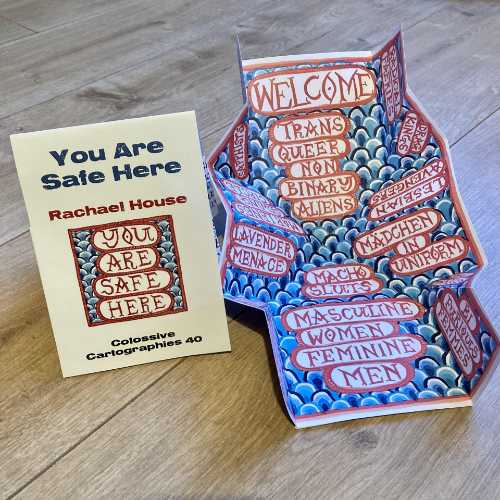
Rachael’s contribution to the Colossive Cartographies line
AO: You’ve been involved in creating comics and zines since the 1990s. How would you say the worlds of self-publishing and DIY culture have developed and evolved in that time?
HOUSE: My old school zine community largely communicated via snail mail. Then known as ‘mail’. It was international and very queer, funny, radical and angry. We traded zines and sent dollars through the post. Larry-bob’s Queerzine Explosion connected lots of us. People I met through those pages are still my friends today. Sina Shamsivari, Jeremy Day and Damien Cugley did a UK listing zine too, for queer and feminist zines. Pete Pavement’s Bypass was vital too. I didn’t go to zine fairs, I don’t know if they existed, but I did go to Caption small press fair in Oxford.
Our zines were photocopied, often made secretly on work photocopiers. They were sold as cheaply as possible, covering costs was useful, but didn’t always happen, especially as trades were the BEST way to see zines and meet their makers. I do appreciate that times have changed now, and although those were hard times too, its tougher now for many young people.
There are so many zine fests now, it’s wonderful. I gravitate towards queer and feminist ones usually to ply my wares. This SLCZF will be my first, and I’m really looking forward to it.
I try not to be too curmudgeonly about the way zines have changed, but I dislike that ANYTHING self-published gets called a zine. Things that once would have been ‘artists books’ for instance. There’s a fair few beautifully printed riso zines with little more than nice pictures, I call them ‘owls and cupcakes’. I still like some politics and passion in zines. I often refer people to Holly Casio’s excellent zine This is fake DIY.
I hesitated recently when I was invited to have my zines in a zine library in a big trainer brand’s flagship store for International Women’s Month. I initially felt quite uncomfortable about it, but decided that it would probably bring new audiences for zines, and maybe young women would then feel inspired to make their own zines. I still feel a wee bit grubby though…
A lot of my comics community is in America too. I’ve found going to the Queers and Comics conferences in NY and SF incredibly inspiring. It also informed me of lots of fabulous work by trans and non-binary creators, and many queers of colour too. Jen Camper has been instrumental in making these happen, and she’s one of my favourite cartoonists. If you haven’t seen the film No Straight Lines yet, I really recommend it. Some of the filming was done at Q&C. If you look carefully, you’ll catch a glimpse of one of my zines too.
LDComics and Broken Frontier are great supportive spaces to build community and gain knowledge and information now. Comics people are nice. Zine people are even nicer. That hasn’t changed at all.
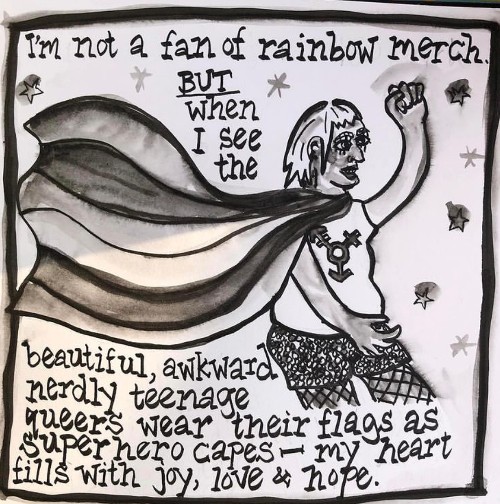
AO: You’re co-director of Space Station Sixty-Five in London. Can you describe the ethos of the gallery both in terms of how the space is run and the kind of work you look to showcase?
HOUSE: I’ve really taken a back seat with this for a while. SS65 started in a shop front in East Dulwich, and we’re now in a much larger space in Kennington. Jo David has been working hard to establish a charity, Space Art, which SS65 is under the umbrella of.
We curate exhibitions and work with guest curators. We’re particularly interested in working with artists, curators and subjects that may be underrepresented elsewhere. We welcome proposals, but we’re currently understaffed, and do not always have time to reply to everything we receive. Before sending proposals, it’s worth looking at our website and visiting exhibitions, to get a sense of what we may wish to support.
We like art to be accessible, without ‘dumbing down’ (I hate that phrase!) we aim to be friendly and welcoming to visitors. I know that sounds obvious, but it’s not always true of contemporary art spaces.
Forthcoming exhibitions include working with And What? Queer Arts Festival, Group show Portals Two, Roman Manfredi’s We/Us and, possibly most excitingly for Broken Frontier readers, a solo show with Steven Appleby. I am VERY excited about working with Steven.
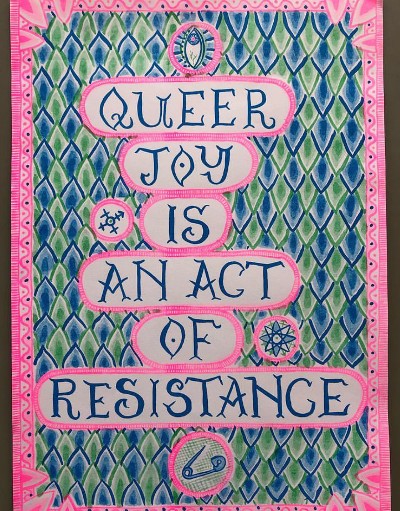
AO: And, finally, what are you currently working on? What’s coming next from Rachael House?
HOUSE: Currently I have some work in an exhibition at The Whitechapel, We Get To Choose Our Families and later this month I’m included in the new exhibition at Queer Britain the National LGBTQ+ Museum in Kings Cross. It’s where House of Illustration used to be. It’s really lovely to be showing in exhibitions again when so much was postponed and cancelled in the last couple of years.
I’m pretty busy working towards a solo exhibition at The Parlour Gallery in Deptford in September. This is part of a lovely grass roots queer art space, The Triangle, with a gallery, studios and a bar called “Gentleman Jacks’. Also in September, I’ve been commissioned to make some work for Romney Marsh Art Trail, inspired by queer historical figures connected to the area.
On July 23rd, I’ll be inviting people to Deconstruct The Gender Binary with big glittery sticks for Folkestone Pride. I’m really looking forward to this one. Do come.
Comics-wise, I’ve got enough drawings to make a new A5 zine, but just haven’t had time to do that yet. As part of my Arts Council funding for my book, I facilitated a series of online comics readings with others who’d made work about the pandemic. I’ve loved working with this group and we’re planning to make an anthology zine together. We haven’t got a title quite yet, but the contributors are Monique Jackson, Natasha Natarajan, Holly Casio, Jess Hannar, Candice Purwin, Rob Bidder and me. We’re meeting regularly online to draw and plot.
It feels like an exciting time for me and my work right now.
Interview by Andy Oliver
Rachael House is at Table 28 at the South London Comic and Zine Fair this Sunday July 10th.
